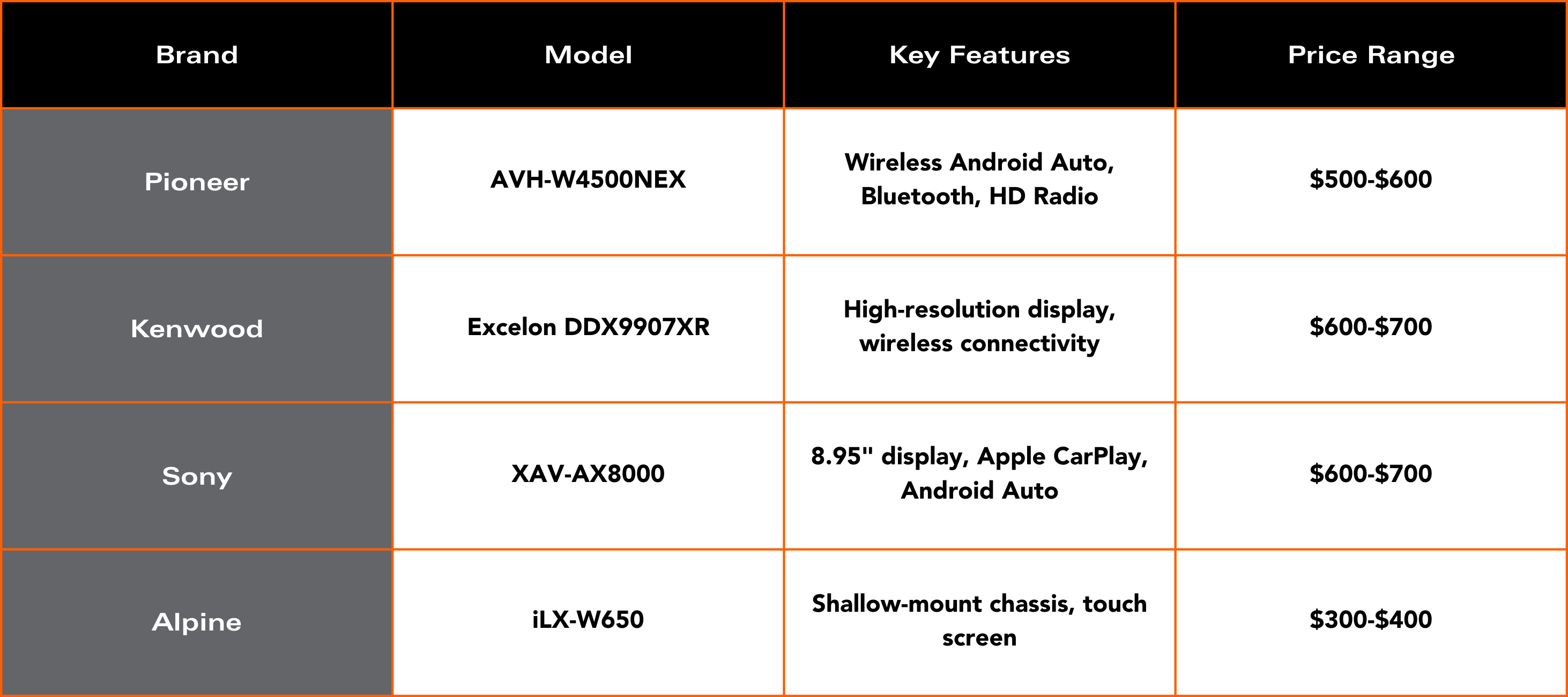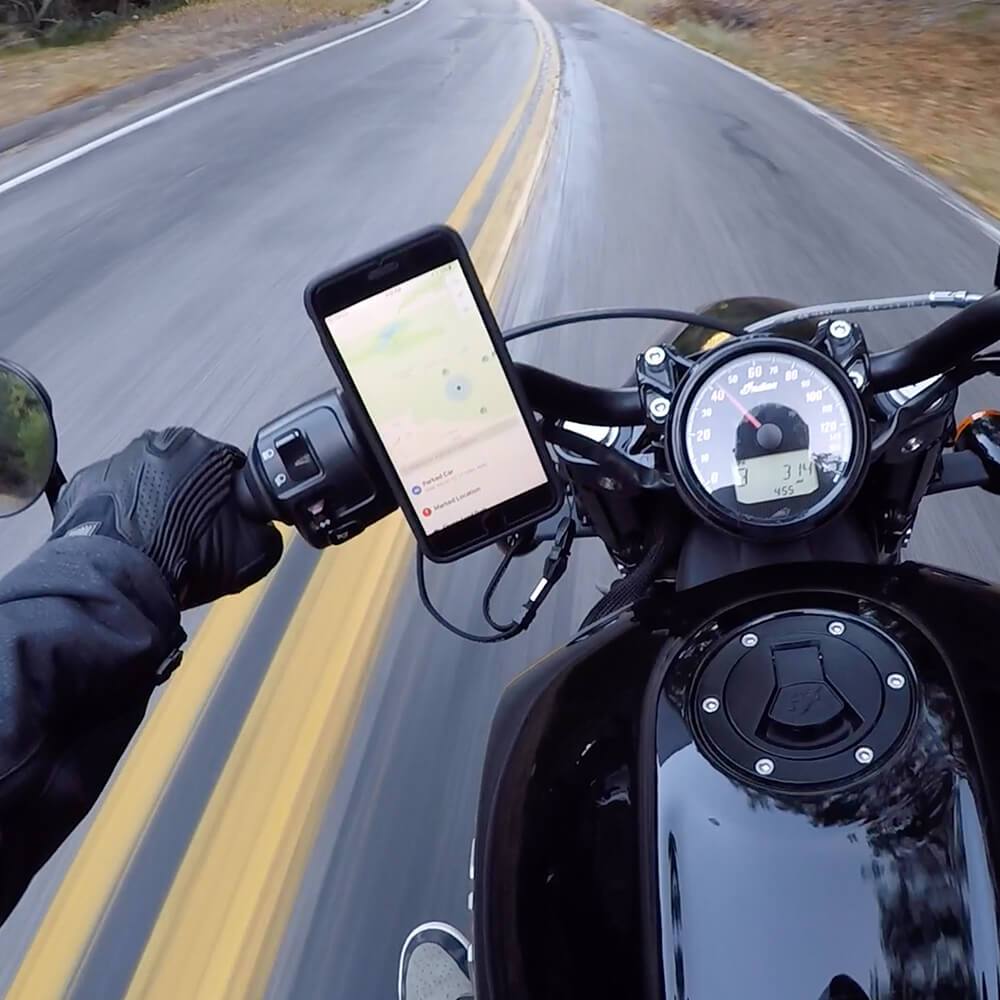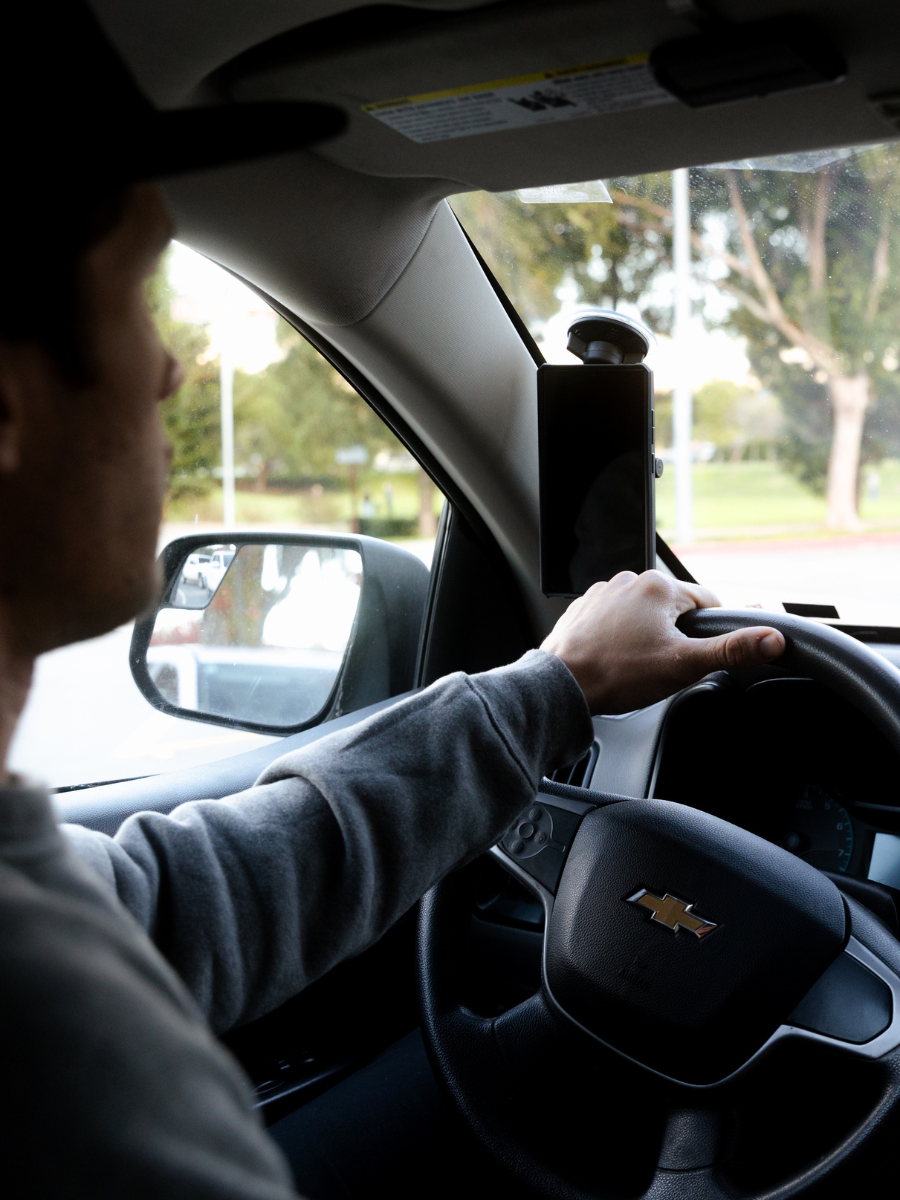If you’re an Android user, you’ve probably heard of Android Auto. When you connect this feature to your vehicle, you’re bound to feel much safer while you access navigation, music, phone calls, and so much more, all the while completely hands-free (and with your eyes on the road).
Even though Android Auto isn’t the newest of features, not everyone knows just how to use it. And that’s okay. We’ve got your back. In this guide, we’re going to show you everything you need to know about how to connect Android Auto in 2024. We’ll cover what you’ll need to do and how to really enhance your experience with it. With our step-by-step instructions and helpful tips, you’ll be a pro at this in no time. Let’s get started:

TL;DR
- Ensure your vehicle and smartphone are compatible with Android Auto.
Choose between wired and wireless connection methods.
Customize your interface for a personalized experience.
Use voice commands to minimize distractions.
Keep software updated for optimal performance.
Explore Rokform’s products to enhance your Android Auto setup.
Hardware and Software Requirements
So, before we dive right into the Android Auto setup, we need to know the hardware and software requirements for this feature to work right. The good news is that over 500 vehicles support Android Auto according to Asurion, this means that, lucky for us, it’s widely available. Here’s what’s needed in your vehicle and your smartphone for things to go off “without a hitch”:
Compatible Car or Head Unit
It’s inevitable that not everyone will have a ride that’s equipped with an Android Auto head unit. These days, some of the more modern rides do come with built-in compatibility. But if yours doesn’t have a compatible head unit, don’t sweat it. There’s an aftermarket head unit out there that can bridge the gap and you’ll be ready to connect Android Auto in no time flat.
A built-in head unit is most commonly referred to as the car’s radio or stereo , it comes direct from the factory.
Some examples of built-in compatibility car models include:
2023 Honda Civic
2024 Audi Q6 e-tron
2023 BMW X1
2024 BMW X2
2024 BMW 1 Series
2021 Chrysler Pacifica
2024 Dacia Duster
With newer cars like these already compatible and ready to rock-and-roll, the car’s infotainment system is completely hassle-free and ready to enjoy.
An aftermarket head unit is an upgrade to the existing car stereo system . It replaces the factory-installed unit.
Some examples of aftermarket head units that allow you to connect the Android Auto App include:
Pioneer
Kenwood
Sony
Alpine
Below, you’ll find a list of some of these popular aftermarket head units in more detail:
Popular Aftermarket Head Units for Android Auto
If your car lacks built-in Android Auto, consider these popular aftermarket head units:

USB Cable or Wireless Adapter
So, should you choose a wired or wireless connection for your perfect setup? No matter what you decide to do, having the right accessories, like universal phone mounts, that keep your phone secure while you’re cruising are necessary. Let’s take a look at wired connections and wireless and see just what you’ll need for each below:
USB Cable
If you choose to go with a USB cable, it’s best to stick with a high-quality brand that’s compatible with both your phone and your car’s head unit. Importantly, not all USB cables are going to work with cars. The best options are typically USB-C data cables.
Wireless Adapter
If wired just isn’t your thing, then wireless dongles work just like a wired connection but minus the hassle of constantly plugging in that cable. An example of these wireless adapters would be the Motorola MA1.
Comparison of Wired vs. Wireless Connection
Still undecided on just which you should choose? We’ve got your back. Check out this chart below and compare the two:

Setting Up Android Auto

Android Auto setup is pretty straightforward, it doesn’t matter whether you choose a wired or wireless connection. Before you do anything else, you may need to either check for or download the Android Auto App.
According to Android developers, Android Auto is already ready to lock and load with Android 10 or higher operating systems. So, as long as you have a device with an operating system of 10 or above, you should be ready to experience all it has to offer after the Android Auto setup. Open Android Auto from your phone, and below, we’ll take you through the process.
Wired Connection Setup
Going for Android Auto wired? Follow the steps below:
Initial Setup
- Start your engine and keep your vehicle in park.
Be sure the infotainment system is on.
Connect your phone to the car’s USB port using the high-quality cable we mentioned.
Then, your car’s infotainment screen will direct you on how to complete the Android Auto setup.
On-Screen Setup
Once connected, follow the on-screen prompts to successfully connect. In most cases, you’ll need to grant permissions on your phone for Android Auto to access necessary features.
If you run into a snag, where Android auto doesn’t auto-launch, touch the Projection or Android Auto icon on your car’s touch screen.
Wireless Connection Setup
Going wireless? Here’s the way to a cable-free experience:
Initial Setup
- First things first: Be sure that your phone and car’s head unit are compatible with wireless Android Auto.
Crank up your car and make sure you’re in park.
From your phone, turn on Bluetooth.
On the vehicle’s head unit, go to Settings > Bluetooth & devices > Add another device > Search for devices.
Choose your phone from the list of discovered Bluetooth devices.
Follow the prompts from your phone and the car’s head unit to start pairing. In some cases, you may need to accept the terms.
Wi-Fi Setup
Importantly, to use Android Auto without wires, your phone needs to have Android 11 or higher and be 5G. Once pairing is successful, connect your phone to the car’s Wi-Fi. Follow the steps from the vehicle’s head unit to complete this part of the setup.
Setting Up Google Assistant
To truly improve your experience with Android Auto, Google Assistant can be a pretty awesome tool. Here’s how to set it up and get the most out of the service:
Enabling Google Assistant
What’s really cool about Google assistant is you can get it up and running in your ride in few different ways:
Voice Command: Just say “Hey Google”.
Steering Wheel Button: If your ride has this option, hit the voice command button on your steering wheel.
Touch Screen: Tap the microphone icon on your car’s screen.
Here’s a few tips to make sure it works perfectly:
Always speak clearly when you’re talking to Google.
Keep your car and your phone’s software up-to-date.
Make sure that you have a strong connection between the phone and the car via Bluetooth or USB.
Using Google Assistant
With Google Assistant active, the world of possibilities is at your voice command. Control navigation, send texts, and more, all hands-free. Just say “Hey Google” and tell it what you need.

Here’s some pretty handy functions and commands if you want to test it out:
Navigation: “Hey Google, take me to Dunkin’ Donuts.”
Text: “Hey Google, send a text to Mom.”
Calls: “Hey Google, call Dad.”
Using voice commands with the power of Google Assistant and Android Auto allows you to keep your eyes on the road and hands on the wheel.
Optimizing Your Android Auto Experience
Once you connect Android Auto, now it’s time to optimize it in a way that suits you. You can customize your interface, explore additional features, and make sure you’re using the system in a safe way that truly works well while on the road.
Here’s some tips for customizing and keeping things safe on the roadways:
Choose a layout for your apps that allows you to access them easily.
While parked, take a good look at all the features Android Auto has to offer, from advanced navigation to media controls.
Stay safe by using voice commands and keeping distractions to a bare minimum.
Customizing Your Interface
Personalization makes everything feel better and makes it much easier to navigate. When you customize the interface, you’ll be able to quickly access all your favorite apps and settings. Here’s how you can make the Android Auto interface all your own:
Open Android Auto Settings: On your phone, go to the Android Auto app.
App Arrangement: Drag and drop apps to prioritize the ones you use most.
Theme and Appearance: Enable dark mode or choose a custom wallpaper for a visually appealing interface, that reduces glare and adds that personal touch.
Enhancing Functionality
To get even more out of the Android Auto experience, be sure to explore additional features and third-party apps. Below, we’ll talk about ways to get the most while you cruise.
Third-Party Apps
Here’s some third-party apps that are well-known and compatible with Android Auto:
Spotify, Pandora, Amazon Music, or Apple Music: For all your music needs.
Audible: For listening to audiobooks on the go.
Google Maps or Waze: For navigation with real-time traffic updates.
WhatsApp, Telegram, Facebook, Skype, or Google Hangouts: Enabling users to text hands-free while driving.
Apps like these can really improve your driving experience. Additionally, using these apps via voice command will allow you to keep your focus on the road, which keeps you safe.
Voice Commands
Now, we’ve touched on voice commands above and them keeping you safe, but voice commands with Google Assistant have literally been a game-changer for all when behind the wheel.
Here’s the benefits that matter the most:
Hands-Free Control
Minimal Distractions
Safety and Best Practices
Using Android Auto the right way means always keeping safety in mind. According to Asurion , in 2021, 12% of all deadly crashes were caused by using phones and being distracted. This further stresses the point of the need to drive free of distractions and with the assistance of technologies such as Android Auto.
Be sure to follow these tips to minimize distractions:
Use Voice Commands: Operate everything hands-free.
Limit Screen Time: Keep interactions brief and focus on driving.
Stay Updated: Regularly update your software on your phone and car for the best performance.
Troubleshooting Common Issues
Even with the best setup, you could run into a snag with Android Auto. here’s how to troubleshoot the most common problems:
Connectivity Issues
Connectivity problems can be really frustrating, but they’re often easy to fix. Here’s how to troubleshoot both wired and wireless connection issues:
Check USB Cable: Ensure your cable is in good condition.
Restart Devices: Sometimes, a simple restart can fix the issue.
Update Software: Make sure your phone and car software are up to date.
Wired Connection Issues
If your wired connection isn’t working:
Check Cable: Ensure the USB cable is not damaged.
Restart Devices: Try restarting both your phone and your car’s system.
Wireless Connection Issues
For wireless connection issues, ensure your phone and car are properly paired via Bluetooth and connected to a stable Wi-Fi network.
Bluetooth and Wi-Fi: Ensure your phone is properly paired with the car and connected to a stable Wi-Fi network.
Compatibility Issues
If you run into problems with compatibility, follow these tips:
Check for updates on the car and phone
Be sure that both your device and car are meeting the compatible standards for Android Auto to run properly.
Latest in Tech for Android Auto
As with all things technology continues to evolve and change. Here’s some of the coolest things that have came out lately when it comes to Android Auto:
Wireless Android Auto Adapters Growing Popularity:
Not everyone wants to be attached to wires. Although many people are still connected via a high-quality USB cable, wireless Android Auto Adapters have stepped into the arena and are quickly becoming trendsetters. These dongles are practically turning heads like the Motorola MA1. Moto claims its wireless adapter has tech built-in directly from Google, the company behind Android.
Google Unveils New Split-Screen Layout:
As of January 2023, Google gave Android Auto a new update. With split-screen, you can play it even safer, seeing your maps while changing your music, all from one screen. And if you get a text, it’ll pop right up on the screen, too. Additionally, Google Assistant will suggest some simple replies on-screen that you can send off in one tap.
It’s easy to see that Android Auto is continuing to amp-up its functionalities and capabilities to make your drives safer and much more convenient.
Common Questions
Below we’ve got some common questions that go over some information in short form in case you missed it above.
Do I Need a Special USB Cable for Android Auto?
It’s highly recommended that you connect the cable provided by the phone manufacturer or data USB-C that’s high-quality. This ensures a stable connection for a wired Android Auto experience.
Can I Use Android Auto Wirelessly?
Absolutely. However, your phone and your car must be compatible with wireless Android Auto. You may need a wireless Android Auto adapter/dongle such as the Motorola MA1 if your car doesn’t support wireless connections on its own.
What Should I Do If Android Auto Isn’t Connecting?
Start troubleshooting your device and car:
Be sure the phone and car’s head unit software is up-to-date.
Check the USB cable or wireless connection.
Restart both devices.
If the problem persists, check your car’s manual or contact support.
Is Android Auto Available on All Android Phones?
Tying It All Back to Rokform

At Rokform, we offer the best phone cases and a range of accessories that can amp up your Android Auto experience while cruising the streets. Just like Android Auto keeps you hands-free, our magnetic phone cases and mounts provide secure and convenient ways to use your phone while driving.
All of our rugged Rokform cases and mounts feature the most powerful N52 Neodymium magnets and military-grade protection, so your phone stays in place as you interact with Android Auto on the go.
While you’re asking Google for directions, listening to music, or talking to your best bud, Rokform is there to ensure your device is safe from every bump in the road.
All of our products come with a 60-day money-back guarantee and a 2-year warranty*, so you can rest easy knowing that you made a solid investment. Explore the Rokform collections and get ready to make the most out of your Android Auto setup.
Learnings Recap
We’ve covered a lot of ground in this guide. Here’s a quick recap of the key points to remember when connecting and truly enhancing your entire Android Auto experience:
Ensure your vehicle and smartphone are compatible with Android Auto.
Choose between wired and wireless connection methods.
Customize your interface for a personalized experience.
Use voice commands to minimize distractions.
Keep software updated for optimal performance.
Explore Rokform’s products to enhance your Android Auto setup.
Final Thoughts
One thing is for certain: when you connect Android Auto, you’re changing your life on the road for the better, with more convenience and safety. As long as you follow the steps in this guide, you’ll be able to get the most out of Android Auto and all it has to offer. Whether that’s maps, listening to tunes, or staying connected hands-free, remember that the key to the best experience with Android Auto lies in compatibility, software updates, and keeping things safe. Combine all that with Rokform’s unbeatable range of accessories, and you can truly take your car’s setup even further.
Thank you for taking the time to read this guide. We hope it has provided you with the information you need to master Android Auto and enjoy a safer, more connected driving experience. If you still have a little time on your hands and want to know more about just how Rokform provide protection in the real world, check out our Survival Series:
Survival Series: Hanging by a Magnet - True Rokform story that sheds light on just how strong and powerful N52 Neodymium magnets are.
- Survival Series: Magnet FTW - Another true Rokform story with intel from a customer who’s been with us since 2012.








